Are you interested in your toddler learning some independent play skills so you can get a few things done without needing to turn on a screen? Or maybe you’re looking for fun and new ways to engage your toddler (and big kids) in different sensory experiences. This post is all about how to make sensory bins for toddlers that will keep them busy, engaged, and learning!
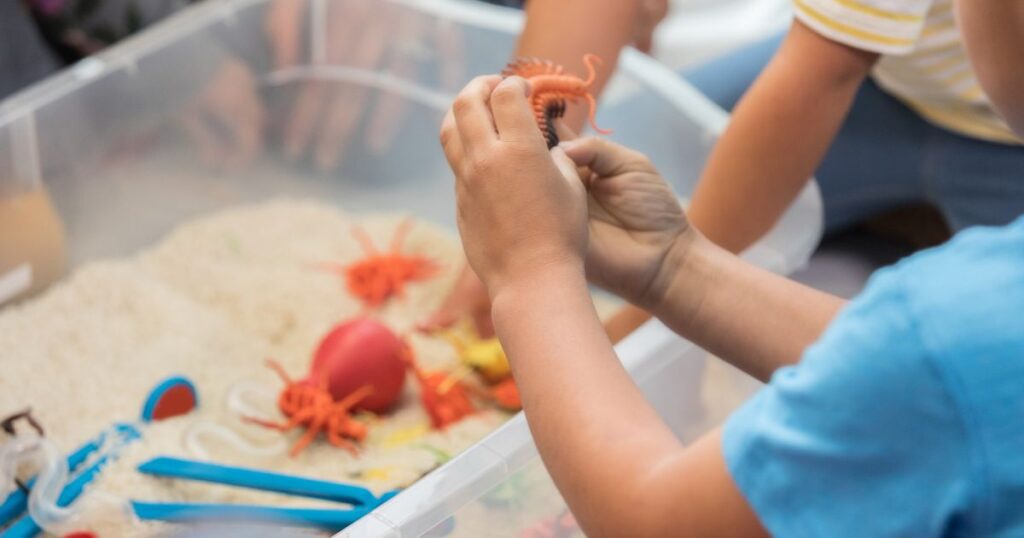
Maybe you’ve seen a lot of super aesthetic posts on social media showing you beautiful sensory bin ideas and start to feel overwhelmed. I know I have before.
I’m here to tell you (from experience!) that sensory bins don’t have to be expensive, overly messy, or complicated! I made a sensory bin from scratch, based on a theme, for my toddler every month last year and it was SO fun.
I now have a toddler that will independently play with her sensory bin for 30+ minutes! (Hello, time to sit and drink something while it’s still hot!)
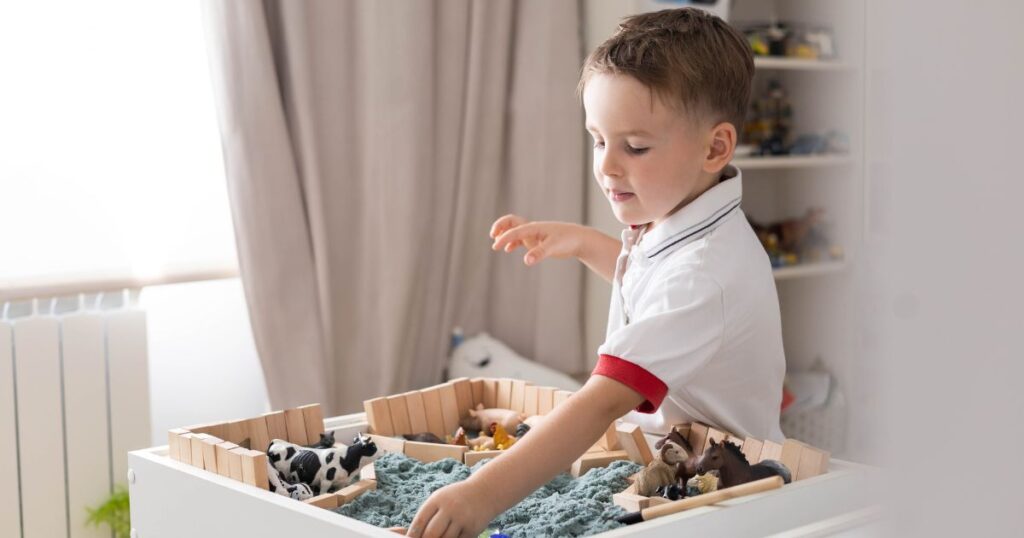
Here are the Benefits of Sensory Bins for Toddlers
Sensory bins offer a ton of benefits developmentally for our kids! Depending on the different items you put in, it can be great exposure to different textures, shapes, and smells. Playing with a sensory bin has definitely helped my 3 year old daughter be less grossed out by different textures on her hands.
They’re also a great way for your kids to develop fine motor skills as they use different tools and items to engage with the bin. They also have to use their problem solving skills as they use the bin in different ways – a great way for them to be creative!
Finally, I have noticed that sensory bins help kids develop independent play skills PLUS there is the bonus that they often have a calming effect.
1. Enhances Sensory Exploration
Sensory bins stimulate multiple senses simultaneously, including touch, sight, sound, and sometimes smell. This multisensory engagement helps children process and understand different sensory inputs, aiding in sensory development.
2. Improves Fine Motor Skills
Activities like scooping, pouring, and manipulating objects within sensory bins strengthen the small muscles in children’s hands and fingers, essential for tasks such as writing and buttoning.
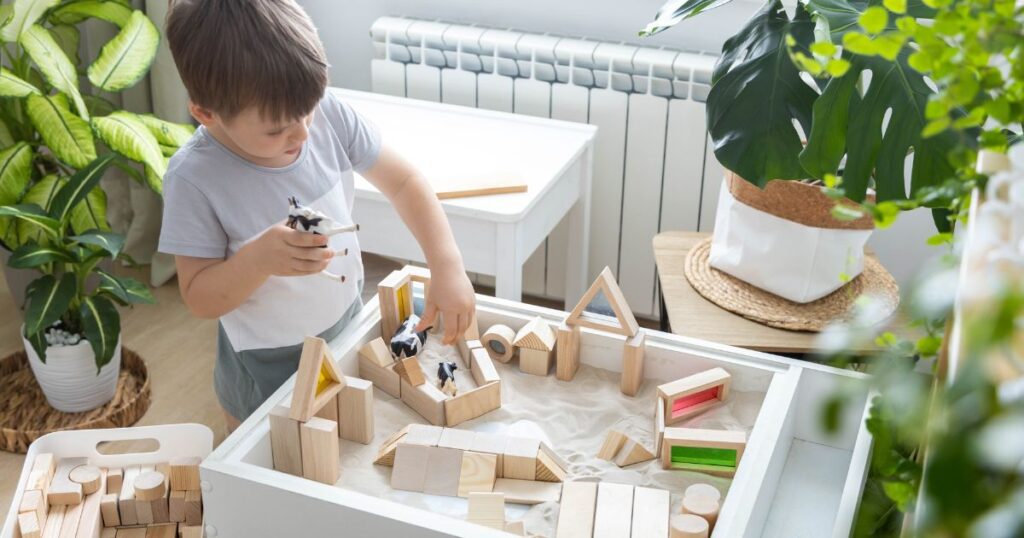
3. Supports Cognitive Development
Sensory play encourages problem-solving and decision-making skills. For instance, sorting objects by size or color within a sensory bin can enhance a child’s cognitive abilities.
4. Promotes Speech and Language Development
Engaging with sensory bins provides opportunities for children to learn new vocabulary as they describe textures, actions, and objects, thereby enhancing their language skills.
Click here for more tips and tools for speech and language development
5. Encourages Social Interaction
When children play together with sensory bins, they practice sharing, taking turns, and communicating, which are vital components of social and language development.
6. Calms and Regulates Emotions
Sensory play can have a calming effect on children, helping them manage anxiety and frustration. The tactile experience can serve as a form of self-regulation, promoting emotional well-being.
Incorporating sensory bins into your child’s playtime can support various aspects of their development, making learning both fun and effective.
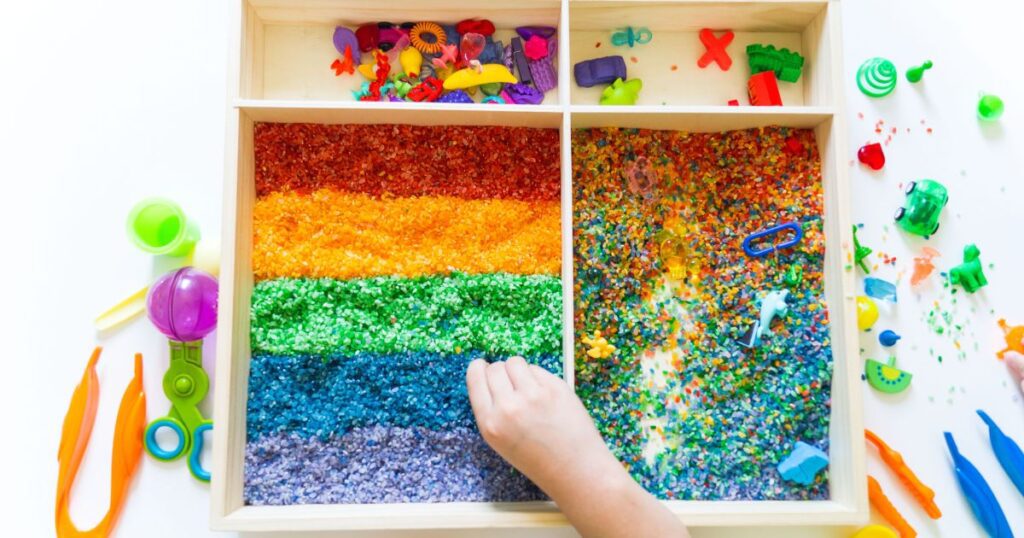
How to Make Sensory Bins for Toddlers
Sensory bins are one of the best tools for engaging toddlers in hands-on learning and play. These simple setups provide endless opportunities for exploration, creativity, and skill-building—all while keeping little hands busy. Whether you’re new to sensory play or looking for fresh ideas, this guide will answer all your questions about creating sensory bins that are safe, fun, and budget-friendly.
How to Set Up a Sensory Bin
Creating a sensory bin is simple! It is easy to get caught up in how perfect or complex the sensory bin is, but really all you need to do is follow these steps: (you can even just use things you already have around your home!)
- Choose a Container: A shallow plastic bin works best.
- Pick a Filler: Select materials based on your toddler’s age and interests.
- Add Tools: Include scoops, spoons, cups, or tongs.
- Incorporate Toys: Add small toys that match your theme (e.g., alphabet puzzle pieces for learning activities).
- Set Boundaries: Lay down a mat or towel to contain messes.
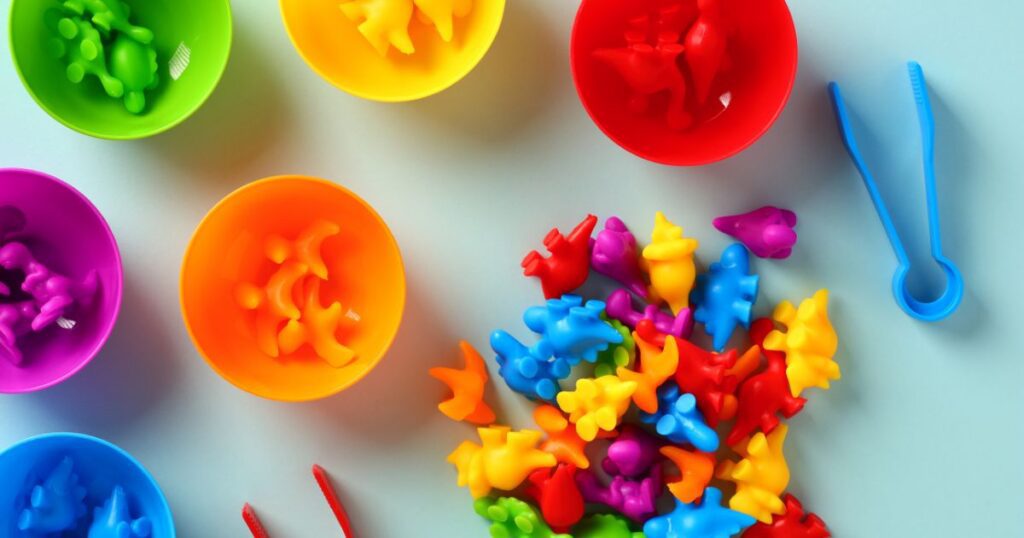
What to Put in a Sensory Tub for Toddlers
A sensory bin, or tub, typically includes a filler material paired with tools or toys that align with a theme. Here are some ideas:
Taste-Safe Fillers
For younger toddlers who put everything in their mouths, consider using a base (aka a filler) that is taste safe so you can feel comfortable if any gets in their mouth:
• Dry rice (plain or dyed)
• Cereal (like Cheerios or puffed rice) – whole OR ground into a sand consistency
• Cooked pasta
• Gelatin or pudding
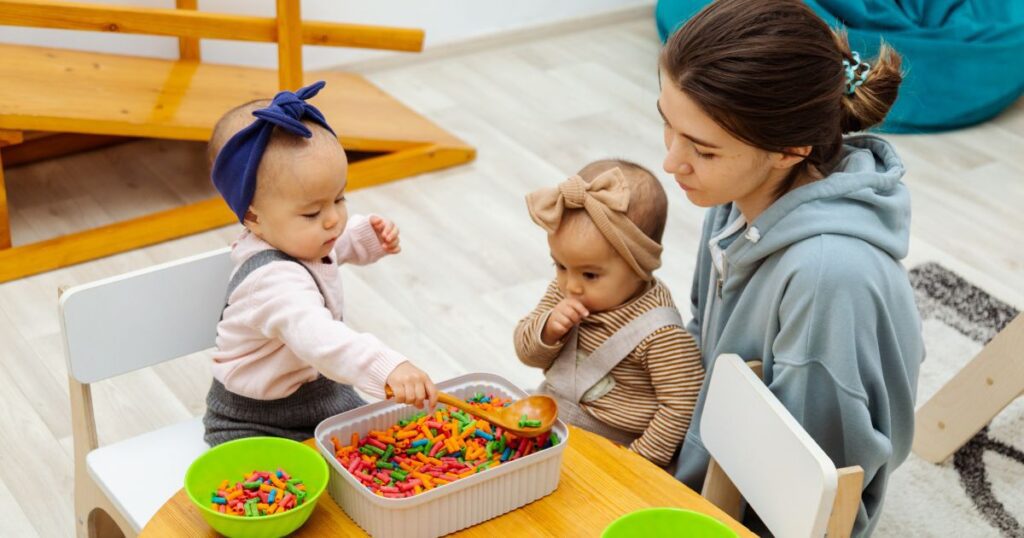
Non-Taste-Safe Fillers
For older toddlers who can be trusted to not put items in their mouth, here are some other options (remember, toddlers should still be supervised during independent play with their sensory bins, just in case!):
• Kinetic sand
• Dried beans or lentils
• Pom-poms
• Playdough
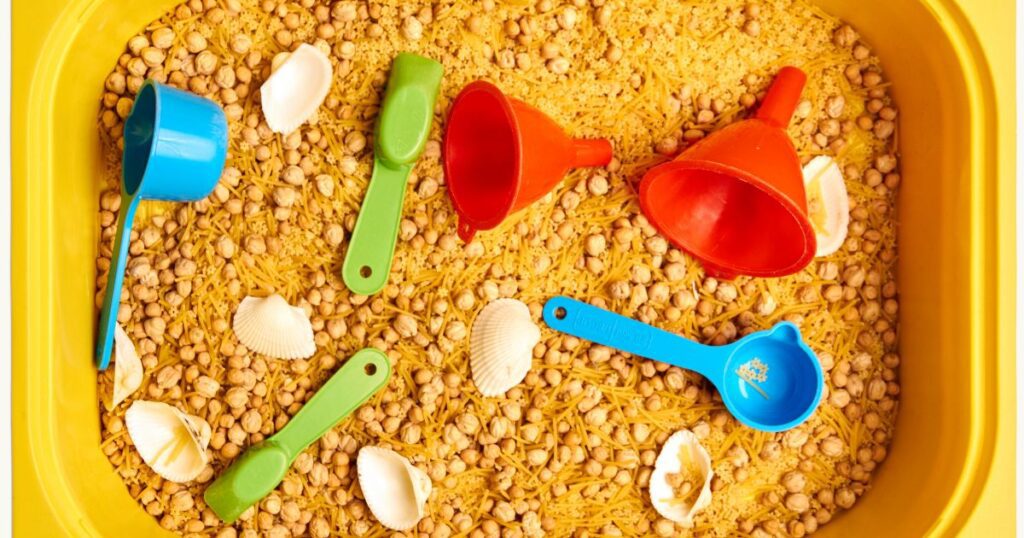
Themed Additions
Be sure to join my newsletter as I send out monthly ideas for themed sensory bins that are easy to DIY at home! Here are some fun and engaging themes:
• Construction Site Theme: Use cereal as “gravel” with toy trucks.
• Animal theme: Add small animal figurines and fake grass. Focus on animals from specific ecosystems – like jungle animals, farm animals, etc!
• Seasonal and weather themes: For example, for winter, you could use cotton balls as “snow” with scoops and tongs.
• Color sorting or shape sorting theme: Include pom-poms and bowls for sorting by color.
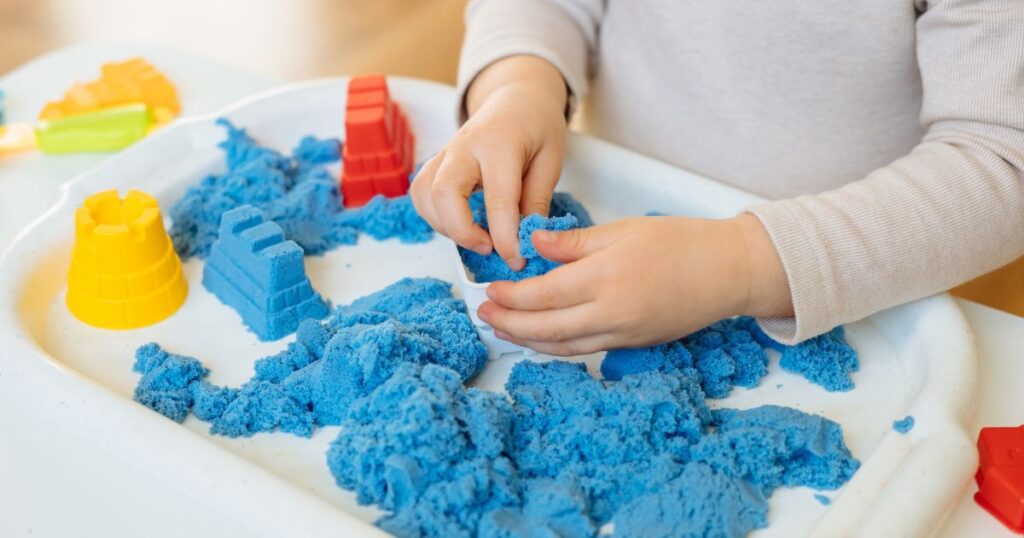
What are Budget Friendly Ways to Fill a Sensory Bin?
You don’t need expensive materials! Many fillers can be found at home or purchased inexpensively. Here are a few ideas to get you started:
- Dried beans or lentils from the pantry
- Rice dyed with food coloring
- Dollar store items like pom-poms or plastic animals
- DIY options like cloud dough (flour + oil) or oobleck (cornstarch + water) are also budget-friendly and fun to make
- Use tools and toys you already have around your house – measuring cups, little tongs, small cups, small toys, alphabet pieces, etc. Once you start looking around, you’ll find lots of good options to keep your little one busy!
If you want to look at budget-friendly sensory bin supplies but don’t necessarily want to DIY, here are some recommendations for affordable sensory bin supplies.
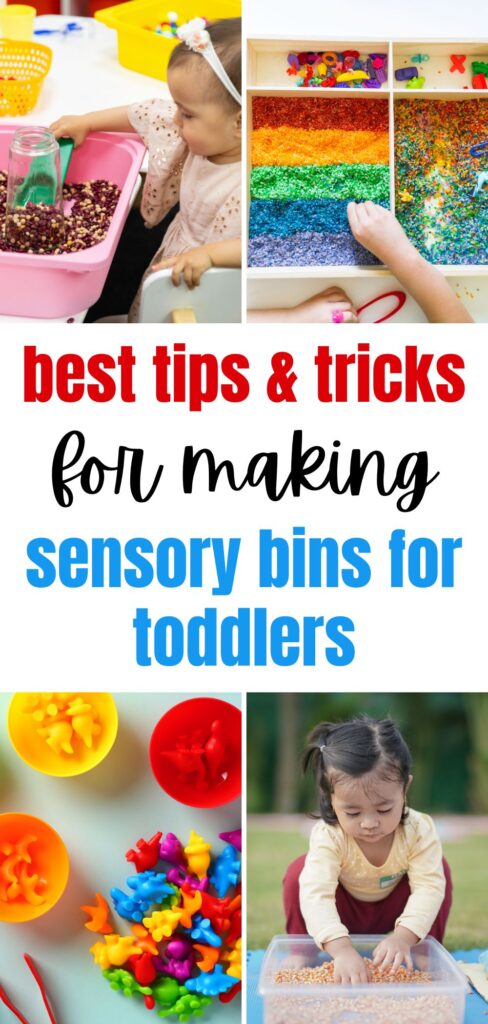
Leave a Reply